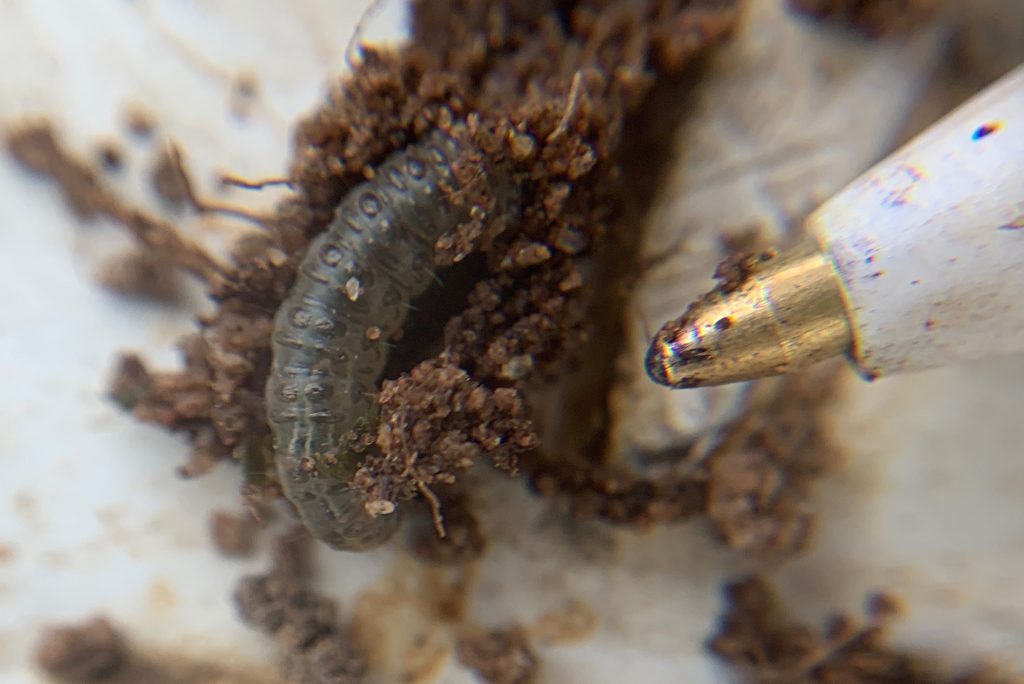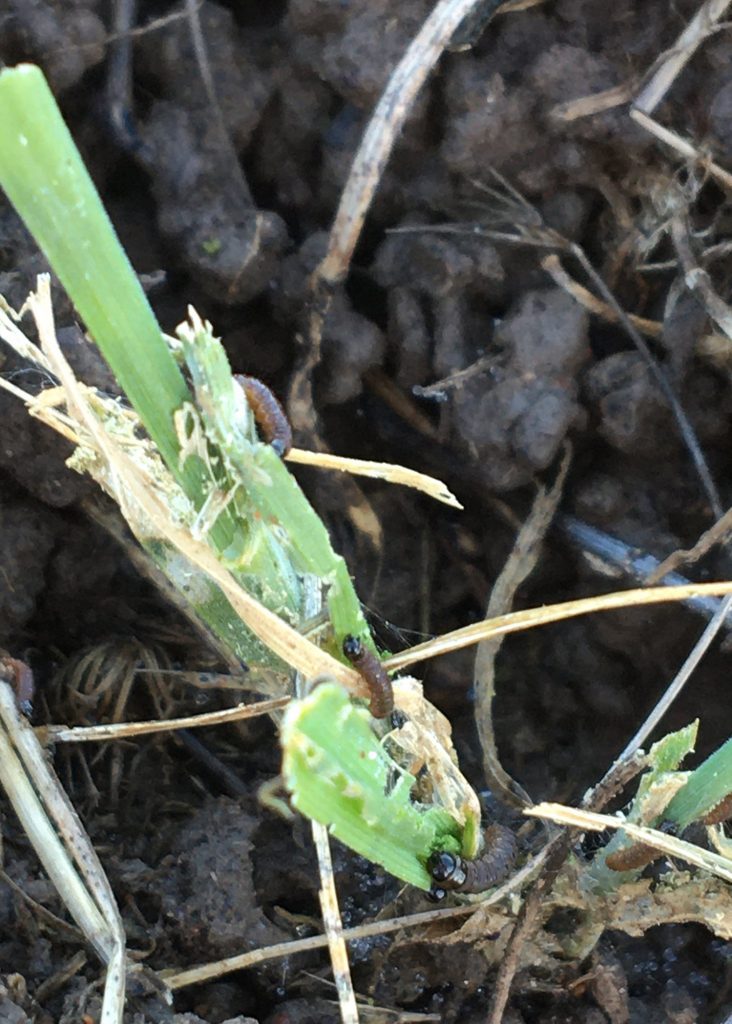If you are finding chewing damage in cereals and dig up some dull-looking grubs in the nearby soil, you may think it is cutworm at first.
However, pasture webworm is also around at this time of year and identification of the two can be confused.
Here are four questions to consider to help tell pasture webworms (Hednota spp.) and cutworms (Agrotis spp.) apart*:
Are you seeing evidence of tunnels?
When pasture webworms are young, the larvae feed on plants above ground, creating windowing damage similar to lucerne flea.
However, as pasture webworm larvae become older (and larger), they construct vertical, web-lined tunnels in the soil, from which they emerge at night to feed. They often cut off leaf blades and drag them into their tunnels where they feed from the safety of the tunnel entrance. These tunnel entrances may be sighted near damaged plants, particularly if cereal leaves or grass blades are protruding.
Cutworms are also night-active and curl up and seek shelter in the soil at the base of the plants during the day – but their hiding spot is not a sophisticated web-lined tunnel like that of the pasture webworms.
Are you seeing webbing?
As the name suggests, pasture webworms produce webs and they can leave evidence of this around the paddock, particularly in the soil.
Cutworms don’t produce webs.
Do they have dark patches?
There are some difference in colouration between cutworms and pasture webworms that are useful for identification, however as both pest groups include several species that can vary in appearance, for simplicity, it’s easier to look out for darker raised patches.
Older pasture webworm larvae have obvious, large, dark raised patches down their bodies, which is quite a distinguishing feature.

Photo by Darcy Bullen 
Photo by Julia Severi, Cesar Australia
How big are the grubs?
While pasture webworm larvae don’t grow larger than 18 mm, cutworm grow to 40 mm in length.
If you are finding larvae approaching 20 mm, look out for the dark patches on their bodies, tunnels and webbing, to help to determine if they are pasture webworm.
*There are several other cereal-feeding moth larvae (e.g. armyworm) that could be present in crops at the moment. For help with identification of other species please contact us.

Photo by Rohan Brill 
Photo by Rohan Brill

Photo by Annieka Paridaen 
Photo by Annieka Paridaen
Acknowledgements
Thanks to the following for providing field observations: Darcy Bullen (Western Ag), Annieka Paridaen (Premier Ag), Darren Jones (Crop Smart), Sam Schulz (Elders), Rohan Brill
Cover image: Photo by Darcy Bullen





